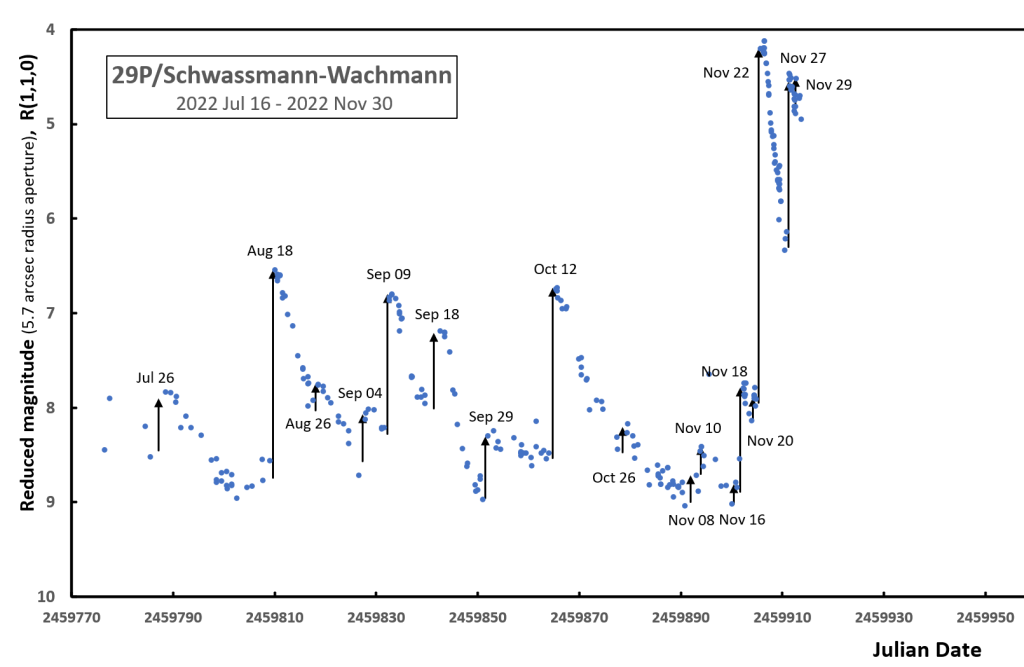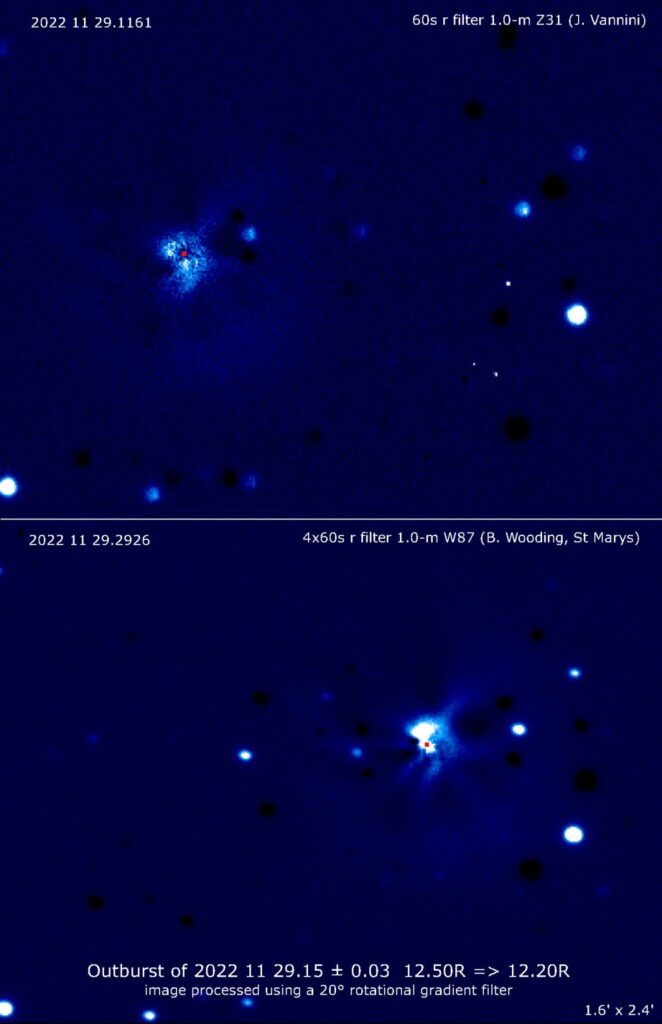-
Faulkes Telescope Project Privacy Policy
Comet 29P outburst is causing excitement!
Known for its explosive personality, comet 29P/Schwassmann–Wachmann is causing quite a stir. A few weaker outbursts have been detected over the past few days as seen in the latest lightcurve (Figure 1).

Figure 1. 29P/Schwassmann-Wachmann comet lightcurve
The outburst of the 29th of November was detected thanks to imaging by Ben Wooding at St Mary’s School in Bridgend, Wales. Image processing of the latest 1.0-m exposures from Las Cumbres Observatory, Chile, confirmed this new strong outburst. In other words, a further cryo-eruption was triggered.

Figure 2. Top image by Julio Vannini, bottom image by Ben Wooding
What is remarkable is that the lower image in Figure 2 shows a new fan-shaped feature extending to about 3 arcsec from the nucleus, yet this appeared only 2-3 hours after this eruption began. To do this, the leading edge must have travelled at speeds up to about 1.0 km/s projected on the sky. This makes this latest event unusual and suggests that it is gas-driven from a relatively warm source at around 70-90 K.
Moreover, is that the brightening of November 29 was rather short-lived. This is something that might have been missed in the past.
We need URGENT help with observations. While the 2.0-m Faulkes Telescope North is affected by bad weather and nearby volcanic activity, do continue to use the 1.0-m telescopes and the 2.0-m telescope from Faulkes Telescope South. An exposure of 60s will work well.
If any help is needed setting this up, please contact one of the people below:
Helen Usher – helen.usher@open.ac.uk
Cai Stoddard-Jones – Stoddard-JonesIC@cardiff.ac.uk
Richard Miles – rmiles.btee@btinternet.com
all of whom will happily assist!
More information can be found by following this link:
